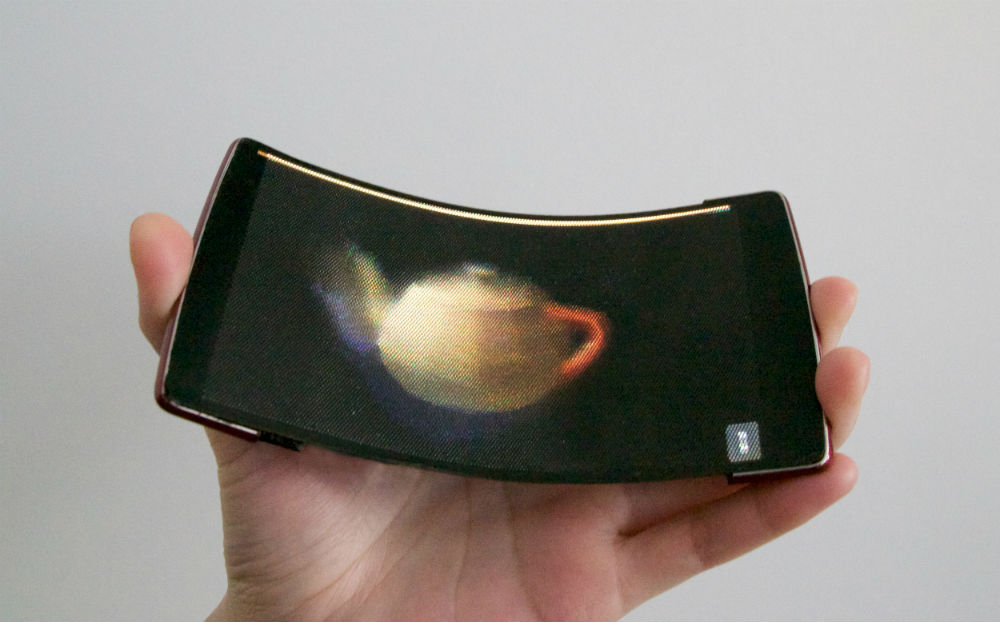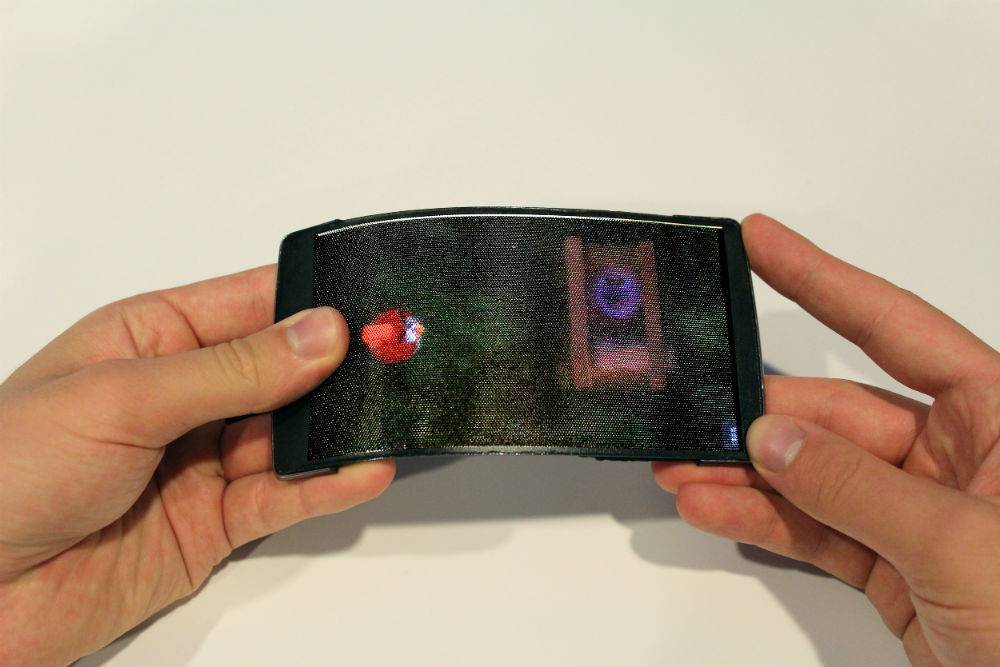Future flexible smartphone will project holographic images
Remember ReFlex — the world’s first flexible smartphone presented by Queen’s University Human Media Lab? Well, the lab has done it again, revealing another flexible smartphone, but this one can project holographic images.

The device, called HoloFlex renders 3D images with motion parallax and stereoscopy to multiple users without the need for any head tracking or glasses.
“HoloFlex offers a completely new way of interacting with your smartphone. It allows for glasses-free interactions with 3D video and images in a way that does not encumber the user.” says Dr. Vertegaal.
The phone features a 1920 x 1080 high-definition Flexible Organic Light Emitting Diode (FOLED) touchscreen display. Images are rendered into 12-pixel wide circular blocks that project the full view of the 3D object from a particular viewpoint. The pixels are projected through a 3D-printed flexible microlens array that contains more than 16,000 fish-eye lenses. The resulting image allows users to inspect a 3D object from any angle by just rotating the phone.

The phone is equipped with a bend sensor, which allows the user to bend the phone in order to move objects. HoloFlex is powered by a 1.5 GHz Qualcomm Snapdragon 810 processor and 2 GB of memory.
The team, led by Dr. Vertegaal, envisions that the new smartphone technology could be used for applications such as 3D printing to manipulate objects in the x and y axes and gaming purposes.
“By employing a depth camera, users can also perform holographic video conferences with one another”, said Dr. Vertegaal. “When bending the display users literally pop out of the screen and can even look around each other, with their faces rendered correctly from any angle to any onlooker”.


Comments are closed, but trackbacks and pingbacks are open.